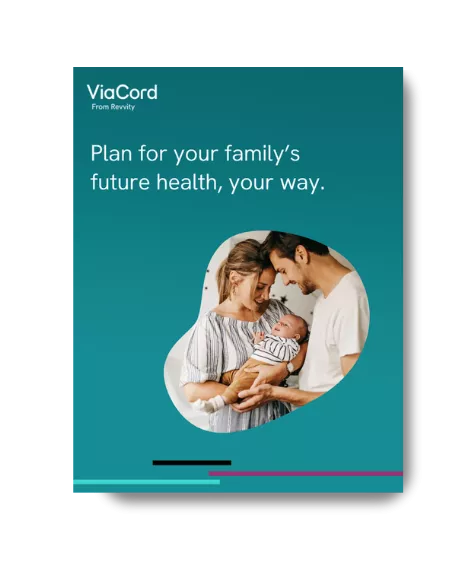Every year, Stem Cell Awareness Day brings recognition to all the wonderful ways stem cells are being used in today’s treatments and the research paving the way to help discover more in the future. From all the families who have benefited from using stem cells in today’s treatments to the millions of families who could one day benefit from them in the future, there is quite a lot to celebrate. Stem Cell Awareness Day, which originated in California in 2008 and is now is observed globally, falls on Wednesday, October 7th.
So, what’s all the hype about? Stem cells are especially unique because they have extraordinary qualities that work to help repair and heal the body. They can transform into other types of cells, regenerate, renew, and replace damaged cells. Did you know that your baby’s very own umbilical cord is packed with many types of these beneficial stem cells?
A Valuable Source of Stem Cells
The blood found within the umbilical cord after your baby is born is known as cord blood. There are numerous types of stem cells found in cord blood, including a type called hematopoietic stem cells (HSCs). These cells manage the development of your baby’s blood and immune system, and as your baby grows older, they’re in charge of sustaining it throughout their life.
And that’s not all. The tissue that makes up your baby’s umbilical cord, or cord tissue, also contains special cells. It has several types of stem cells, one of them being Mesenchymal Stem Cells (MSCs). These cells have the special ability to quickly divide, regenerate, differentiate into other cells, and help with inflammation and tissue repair.
Normally after birth, the umbilical cord is considered medical waste and disposed of. But, thanks to the advancements in science, families can save, or ‘bank’ their baby’s stem cells to plan for their future health.
What can stem cells do?
Think of your baby’s stem cells as having superpowers. They do quite a lot. For over 30 years, cord blood has been used in transplant medicine. Today, they’re used to treat nearly 80 diseases including cancers, blood disorders, bone marrow failure syndromes, metabolic disorders, and immune disorders.
Although there are no known treatments using stem cells from cord tissue just yet, there is a lot of buzz happening around the exciting research using these unique and powerful cells. Researchers hope that one day cord tissue stem cells will be used to treat conditions that affect cartilage, muscle and nerve cells.19 Watch the video below to learn even more about cord blood and tissue stem cells and why families are saving them for their future use.
Looking Ahead with Stem Cell Research
As researchers learn more about stem cells, they’re continuing to discover new possibilities around their healing potential. Each day, we’re seeing more children use their own cord blood in a new area of science known as regenerative medicine. The way cord blood is used in regenerative medicine is different from how it’s used in transplant medicine. Regenerative medicine uses cord blood in clinical trials to encourage the body’s self-healing abilities to regenerate and repair.
Regenerative medicine clinical trials are using stem cells from both cord blood and tissue to hopefully one day treat conditions that have no cure. Many ViaCord families have used their banked cord blood in clinical research trials for autism and cerebral palsy. Gracie used her own cord blood in a phase I clinical trial at Duke University for autism. See how Gracie is doing today.
There’s just as much enthusiasm around cord tissue and researchers are undeniably excited about it’s potential in future therapies. There have over 200 clinical trials using MSCs from cord tissue with a focus on potential treatments for areas such as Parkinson’s disease, Alzheimer’s, liver fibrosis, lung cancer, and sports injuries.
With so much happening with the science of stem cells, it’s hard not to get excited about it. By choosing to bank your baby’s stem cells, you are giving your family access to a valuable medical resource if ever needed, now or in the future.
Disclaimer: Banking cord blood does not guarantee that treatment will work, and only a doctor can determine when it can be used. PerkinElmer does not endorse or make recommendations with respect to research, medication, or treatments. All information presented is for informational purposes only and is not intended as medical advice. For country specific recommendations please consult your local health care professionals.
For more details and references, visit viacord.com/references.











